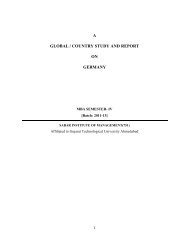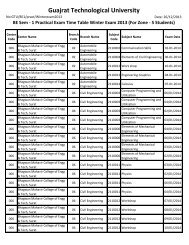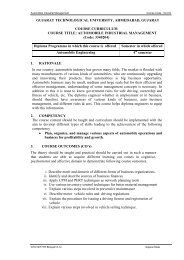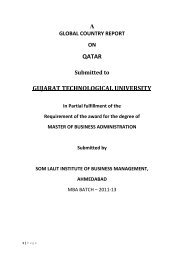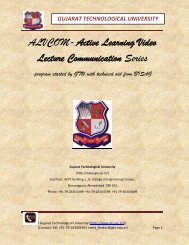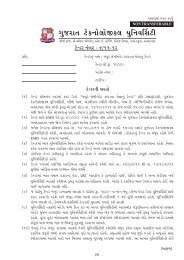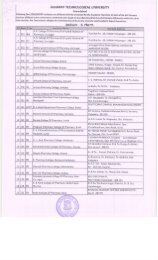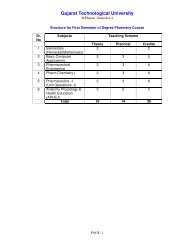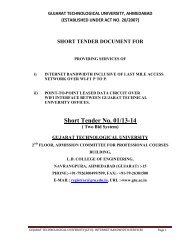792-Dr. J. K. Patel Institute Of Management - Gujarat Technological ...
792-Dr. J. K. Patel Institute Of Management - Gujarat Technological ...
792-Dr. J. K. Patel Institute Of Management - Gujarat Technological ...
Create successful ePaper yourself
Turn your PDF publications into a flip-book with our unique Google optimized e-Paper software.
Import Licensing:<br />
India has liberalized its Import regime for Textiles and apparel, but some of the part<br />
is still limited for market access. Currently, there is no import restriction for yarns &<br />
fabrics items. Apparel & Made-up textiles goods require a Special Import License<br />
(SIL). Govt. revised Exim Policy on 31st March 1999 by eliminating Import Licensing<br />
Requirements for 894 consumer goods, agriculture products and textiles. On 28th<br />
December 1999 India and Us signed an Agreement for the elimination of import<br />
restrictions of 1,429 agriculture, textiles, consumer goods and apparel. India<br />
removed restrictions on 715 tariff items as of 1st April 2000.<br />
Custom Procedures:<br />
Marking, Labeling, and Packaging Requirements: Marking, Labeling, and Packaging<br />
Requirements for Textile products are technically complex and difficult to implement.<br />
According to textile regulation passed on 22nd july 1998 by GOI, Yarns, and Fabrics<br />
to have the statutory markings and these markings should not mislead the<br />
consumers. For instance, Cloths must be remarked with the name & address of<br />
manufacturer, a description of cloth, sort number, length in meters and width in<br />
centimeters, and washing instructions. The Manmade fiber cloth must indicate<br />
whether it is made by spun or filament yarn. The month & year of packaging, the<br />
exact composition of cloth. The Marking must appear on the face plate of each piece<br />
of cloth. The language for marking must be in Hindi and English with international<br />
numerals.<br />
Current Facts on India Textile Industry<br />
India retained its position as world’s second highest cotton producer.<br />
Acreage under cotton reduced about 1% during 2008-09.<br />
The productivity of cotton which was growing up over the years has<br />
decreased in 2008-09.<br />
Substantial increase of Minimum Support Prices (MSPs)<br />
Cotton exports couldn't pick up owing to disparity in domestic and<br />
international cotton prices.<br />
Imports of cotton were limited to shortage in supply of Extra Long staple<br />
cottons.<br />
Parul <strong>Institute</strong> of <strong>Management</strong> and Research - <strong>792</strong> Page 49



